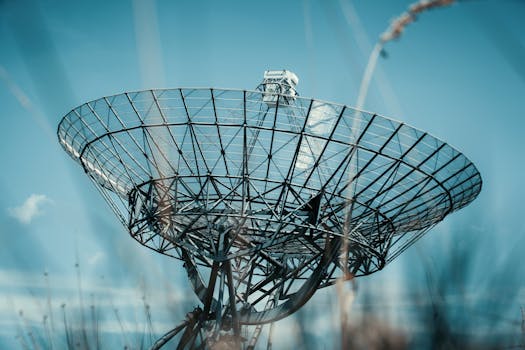
LEO Satellites: Revolutionizing Global Connectivity with Low Earth Orbit Technology
LEO satellites, or Low Earth Orbit satellites, are a type of satellite that operates at an altitude of around 160 to 2,000 kilometers above the Earth’s surface. This relatively low orbit allows LEO satellites to provide faster and more reliable connectivity than traditional satellite systems, which operate at much higher altitudes. In this article, we will explore the benefits and applications of LEO satellites, as well as the companies and technologies driving this revolution in global connectivity.
LEO satellites have several key advantages over traditional satellite systems. Because they operate at a lower altitude, they have a shorter signal delay, which means that data can be transmitted and received more quickly. This makes LEO satellites ideal for applications that require real-time communication, such as video conferencing, online gaming, and remote healthcare. Additionally, LEO satellites have a lower latency than traditional satellites, which means that they can provide a more responsive and interactive user experience.
Applications of LEO Satellites
LEO satellites have a wide range of applications, from providing internet access to remote and underserved communities, to enabling IoT (Internet of Things) devices to communicate with each other and with the cloud. They can also be used for Earth observation, weather forecasting, and disaster response. For example, LEO satellites can be used to monitor crop health, track natural disasters such as hurricanes and wildfires, and provide critical communication services during emergencies.
One of the most significant applications of LEO satellites is in the provision of broadband internet access. Many companies, including OneWeb, SpaceX, and Amazon’s Kuiper Systems, are launching constellations of LEO satellites to provide fast and reliable internet access to communities around the world. These constellations will consist of hundreds or even thousands of satellites, working together to provide a global network of connectivity.
Companies and Technologies Driving the LEO Satellite Revolution
Several companies are driving the development and deployment of LEO satellites, including OneWeb, SpaceX, and Amazon’s Kuiper Systems. These companies are using a range of technologies, including advanced materials, propulsion systems, and antennas, to build and launch their LEO satellites. For example, SpaceX’s Starlink constellation will use a combination of Hall effect thrusters and ion engines to propel its satellites to their operational altitude.
In addition to these companies, several governments and organizations are also investing in LEO satellite technology. For example, the European Space Agency (ESA) is developing a LEO satellite constellation to provide broadband internet access to rural and remote communities. The ESA’s constellation will use a combination of public and private funding, and will be launched in partnership with several European companies.
Challenges and Limitations of LEO Satellites
While LEO satellites offer many advantages, they also face several challenges and limitations. One of the main challenges is the high cost of launching and operating a constellation of LEO satellites. Launching a single satellite can cost tens of millions of dollars, and operating a constellation of hundreds or thousands of satellites can require significant investment in ground infrastructure and personnel.
Another challenge facing LEO satellites is the risk of congestion and interference in the Earth’s orbit. As more and more satellites are launched, there is a growing risk of collisions and interference between satellites, which can cause signal loss and other problems. To address this challenge, several companies and organizations are developing new technologies and protocols for managing satellite traffic and preventing collisions.
Finally, LEO satellites also face regulatory challenges, as governments and international organizations seek to establish rules and standards for the use of LEO satellites. For example, the Federal Communications Commission (FCC) in the United States has established rules for the licensing and operation of LEO satellites, and the International Telecommunication Union (ITU) has developed guidelines for the use of LEO satellites in different frequency bands.




